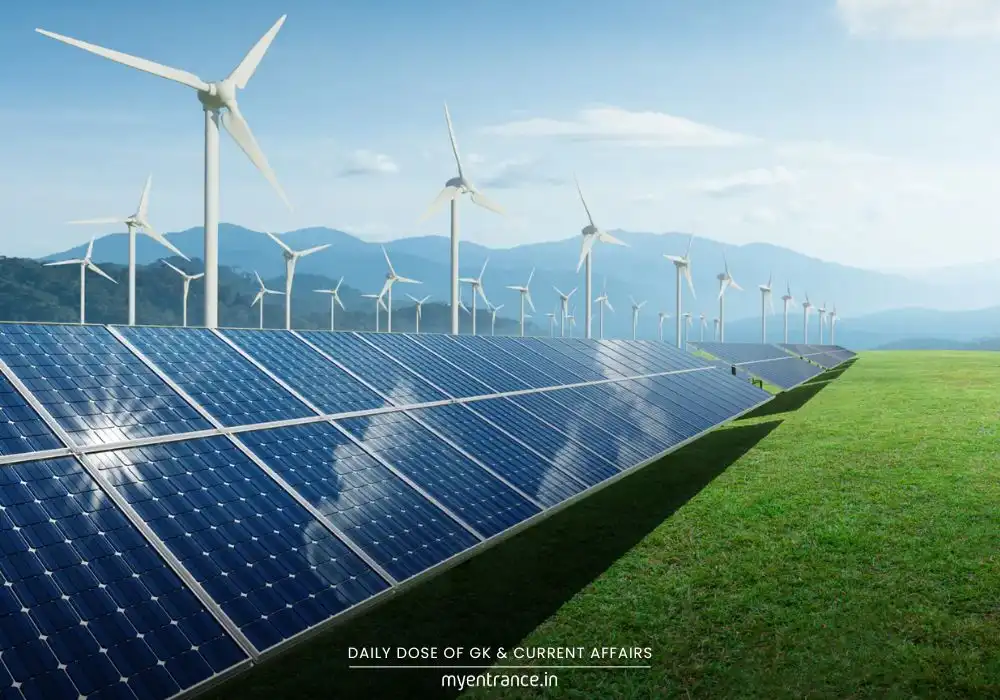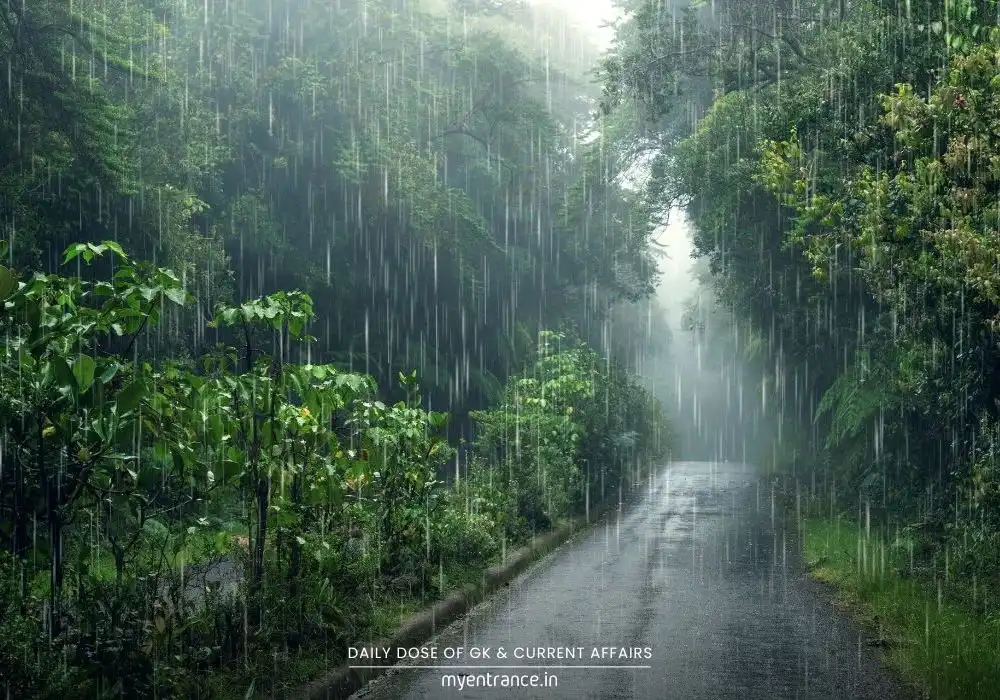Translate Language
Why Going Green Needs More Than Just Solar Panels and Wind Turbines.
The world smashed renewable energy records in 2024, adding a staggering 582 gigawatts (GW) of capacity – a 15% jump! While this growth is impressive and puts us closer to the crucial COP28 goal of tripling renewables by 2030, it masks a critical truth: renewables alone aren’t yet replacing fossil fuels globally. Let’s unpack the data and understand the bigger picture for your competitive exam preparation.

The latest report from the International Renewable Energy Agency (IRENA) brings exciting news: 2024 saw the largest-ever annual increase in renewable energy capacity. A whopping 582 GW came online, pushing global renewable capacity past 4,442 GW. This surge puts the world within striking distance of the ambitious target set at COP28 – tripling renewable capacity by 2030, deemed essential for limiting global warming.
However, this impressive growth hides a less encouraging reality. While headlines celebrate the renewable boom, the harsh truth is that renewable energy has not yet begun to significantly displace fossil fuels on a global scale. Why is this the case? Let’s break it down:
Meeting Rising Demand, Not Replacing Fossils (Yet): The primary role of new renewables so far has been to satisfy the world’s ever-growing appetite for electricity, not to shut down coal or gas plants. Global electricity demand has tripled since 1990 and keeps climbing. Renewables are running hard just to keep up with this new demand. While over 90% of new electricity capacity added in 2024 was renewable, the absolute amount of fossil fuel burned for electricity is still increasing year-on-year. We’re simply using more energy overall.
Electricity is Just One Piece of the Pie: When we talk about energy, electricity is only part of the story – roughly 20-22% of total global energy consumption annually. Even though renewables now generate about 30% of the world’s electricity, this translates to a mere 6% of total global energy consumption coming from clean sources. The vast majority (over 90%) still comes from fossil fuels powering transport, industry, heating, and other sectors.
Fossil Fuels Still Dominate Power Generation: Despite the renewable surge, fossil fuels remain the bedrock of global electricity production, accounting for over 70% of the mix. More fossil fuels are burned for electricity today than a decade ago, and this trend is expected to continue for several more years. Unsurprisingly, this leads to record-high greenhouse gas emissions.
The Scale of Transition Needed is Immense: Current projections suggest that even by 2050, under optimistic scenarios, clean sources might only meet 40-45% of total global energy demand. This starkly illustrates that simply building more solar and wind farms, while vital, won’t be enough on its own to solve the climate crisis within the necessary timeframe. Technologies like carbon capture and removal, though not yet fully viable at scale, become critically important.
Uneven Global Deployment & Supply Chain Issues: The growth is incredibly lopsided. Asia dominated 2024 additions (71%), but China alone installed a staggering 364 GW – more than 62% of the global total! Meanwhile, entire continents like Africa added less than 1%. This unevenness is compounded by China’s near-monopoly on manufacturing renewable technology (like solar panels). While sunshine and wind are universal, the technology to harness them is becoming concentrated, creating supply chain bottlenecks and accessibility issues for many nations, potentially leaving them behind in the energy transition.
India’s Role & The Road Ahead:
India is a significant player in the renewable space, actively promoting domestic and global initiatives like the International Solar Alliance (ISA), co-founded with France. However, the global challenge remains immense. The energy transition is far more complex than simply swapping fossil plants for renewables. It requires systemic changes across all sectors of energy use, massive investment, equitable technology access, and potentially breakthroughs in areas like carbon management.
Key Q&A for Exam Preparation:
Q: What’s the fundamental difference between renewable and non-renewable energy sources?
A: Renewable sources (solar, wind, hydro, geothermal, biomass) are naturally replenished on a human timescale. Non-renewable sources (coal, oil, natural gas, nuclear fission fuel) exist in finite quantities and take millions of years to form, making them depletable.
Q: According to the IRENA 2024 report, what was the major trend in renewable energy, and what’s the key concern?
A: The report highlighted a record 582 GW increase (15% growth) in global renewable capacity in 2024. The key concern is that this growth is primarily meeting rising electricity demand, not significantly replacing fossil fuel use globally. Absolute fossil fuel consumption and emissions are still increasing.
Q: Why is China’s dominance in renewable energy production a potential concern?
A: China’s overwhelming share (over 62% of 2024 additions) and near-monopoly on manufacturing (like solar PV) create supply chain vulnerabilities. It risks leaving other regions behind due to limited technology access and could concentrate geopolitical power in the energy transition.
Q: What was a major agreement related to renewable energy signed at COP28?
A: A landmark agreement was reached at COP28 in Dubai (2023) to triple global renewable energy capacity by 2030, recognizing it as crucial for limiting global warming.
Q: If renewables are growing so fast, why are they still only a small part of the solution?
A: Two main reasons: 1) Electricity’s Share: Renewables mainly supply electricity, which is only ~20-22% of total global energy consumption. 2) Demand Growth: Much new renewable capacity is consumed by rapidly increasing electricity demand, not replacing existing fossil fuel plants. Hence, renewables currently supply only ~6% of total global energy.
Get 3 Months Free Access for SSC, PSC, NIFT & NID
Boost your exam prep!
Use offer code WELCOME28 to get 3 months free subscription. Start preparing today!















